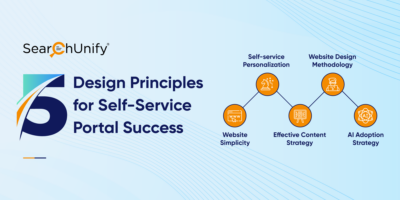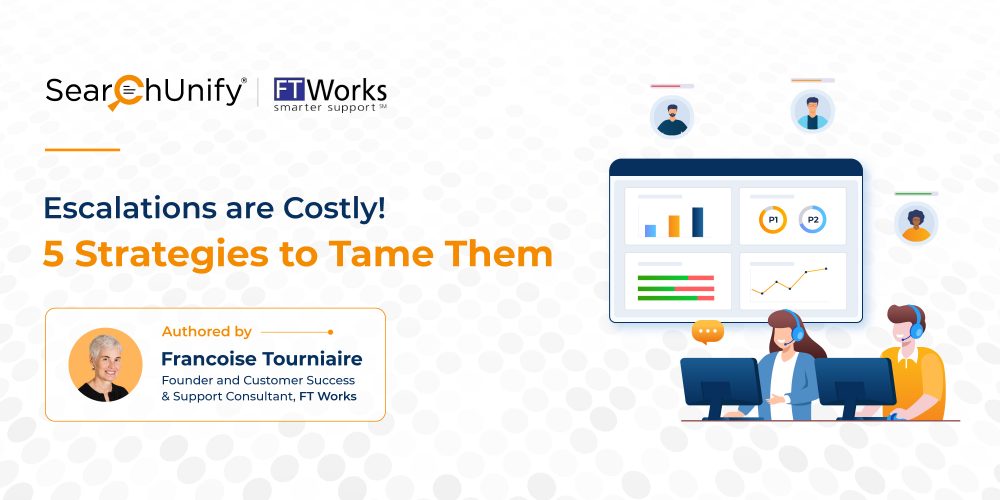
Did you know that a single customer escalation can cost $10,000? And that does not even include the possibility of customer churn based on a bad experience.
What if you could avoid escalations entirely? Reliably manage them to a swift and positive conclusion? Even use them to improve your support processes, your product, even your sales methodology? Here we show you five strategies proven to transform your customer escalations from resource drains to fruitful experiences for customers and your organization: prevent, detect, screen, manage, and learn.
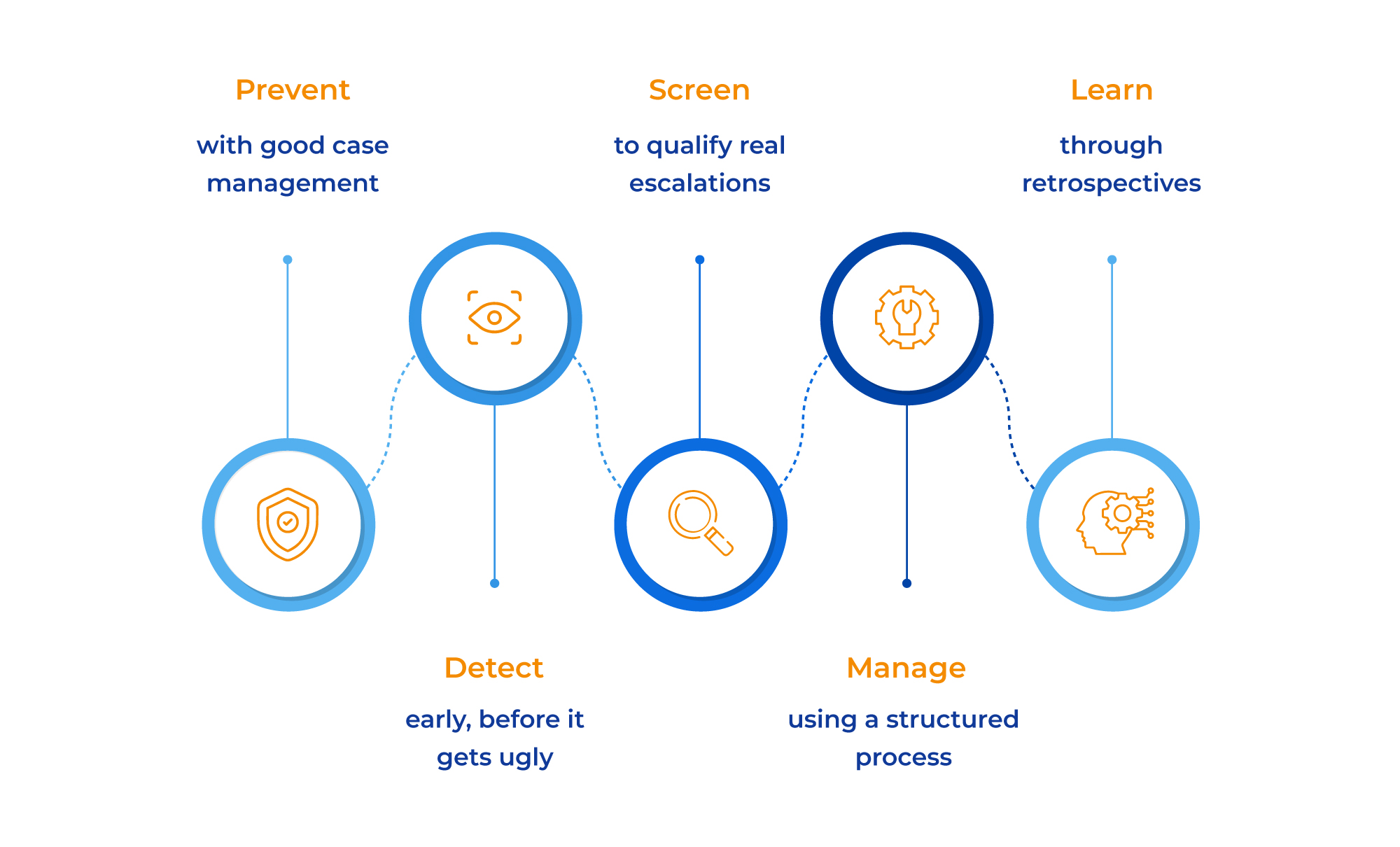
Strategy 1: Prevent
Escalations are completely normal in complex support, but they are not a substitute for proper case management. Do all you can to resolve cases promptly and enjoy fewer escalations.
- Route cases to the right individual, someone with a reasonable chance of solving the issue expeditiously. Don’t just shove new cases to owners via a mindless round-robin system: match them according to skill and track record.
- Create a collaborative environment. Even with astute case routing, case owners may need help: enable them to get it easily, using both asynchronous tools and old-fashioned scrums. You can use a formal swarming methodology here. In any case, the key is to encourage team members to provide help when they have the required expertise, so implement appropriate reward mechanisms.
- Actively manage the backlog. Train and encourage support engineers to set and meet commitments, ensuring that customers are more patient. And monitor aging cases.
- Set up a strong interface with the Engineering team. Many escalations are linked to bugs, and waiting too long for fixes is a common trigger for escalations. Stay on top of the engineering backlog.
Strategy 2: Detect
Escalations that start with a call to a sales rep or, worse, a company executive are likely to be hot and adversarial. Do all you can to detect issues before they boil over.
- Encourage support engineers and managers to escalate cases proactively. It’s often difficult for case owners to admit that they are in over their heads, so set up a system where heads-ups are prized, not frowned upon.
- Deploy sentiment-analysis tools. Once customers start adding agitated comments to the case, a tool can alert the team to take action.
- Welcome requests by CSMs and sales reps. The goal is to handle their requests right away, preventing further elevation into the organization.
-
Make it easy for customers to request escalations. Encourage customers to request escalations right on the website. Doing so actually decreases (real, painful) escalations since customers can reach out before it gets too bad.
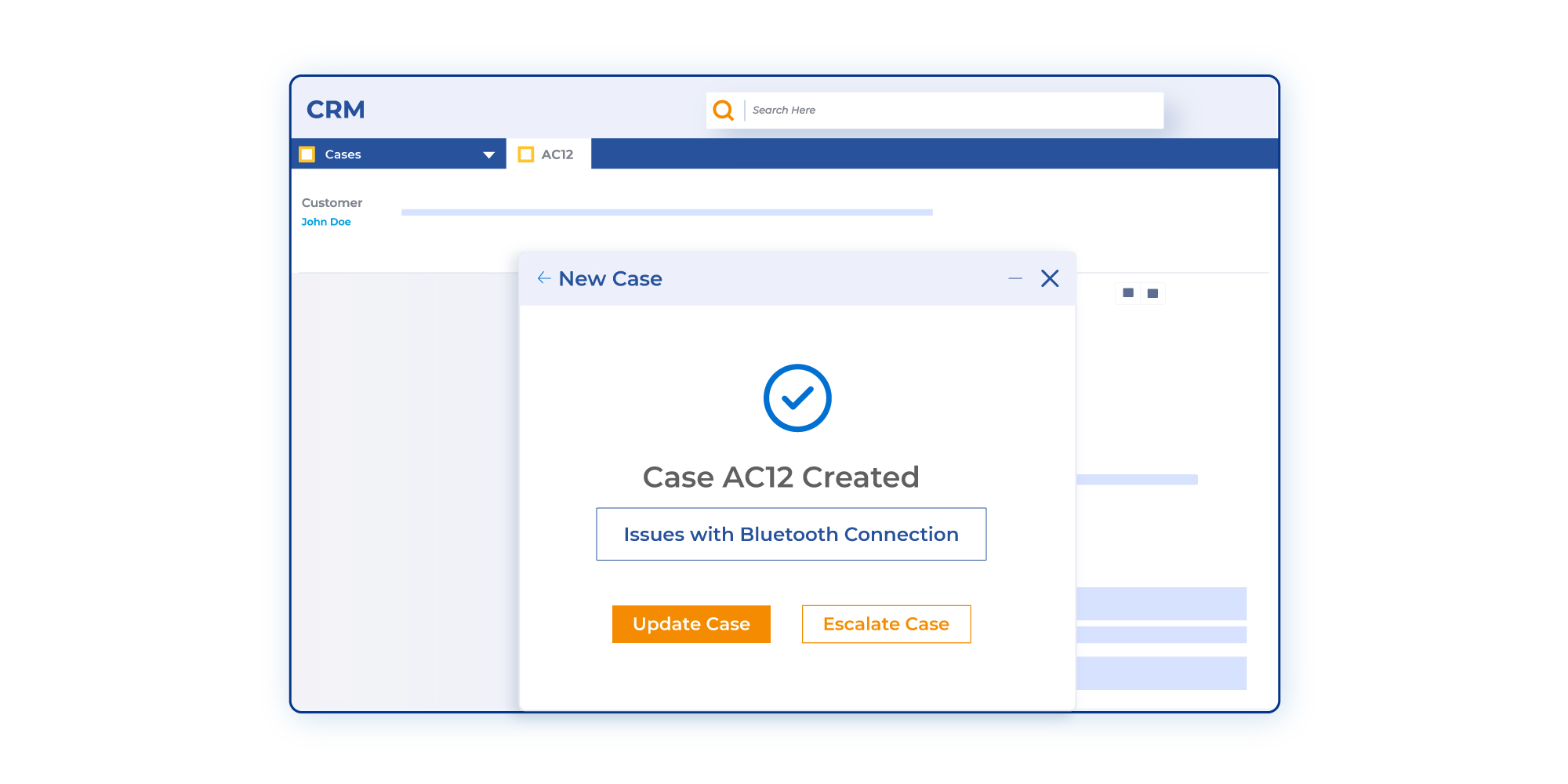
Strategy 3: Screen
Having done a good job of detecting possible escalations, it’s time to screen, hard! Not every request or concern will turn into a formal escalation. Identify the situations that truly deserve specialized attention so you can deploy resources correctly.
-
Create an evaluation rubric. Keep it simple: Does the issue have a critical impact on the customer? Is revenue at risk? Are you expecting a long journey to resolution? Define each criteria to be as unambiguous as possible, then assign weights to the criteria and decide on a minimum score to qualify as a bona fide escalation. See a sample rubric, below
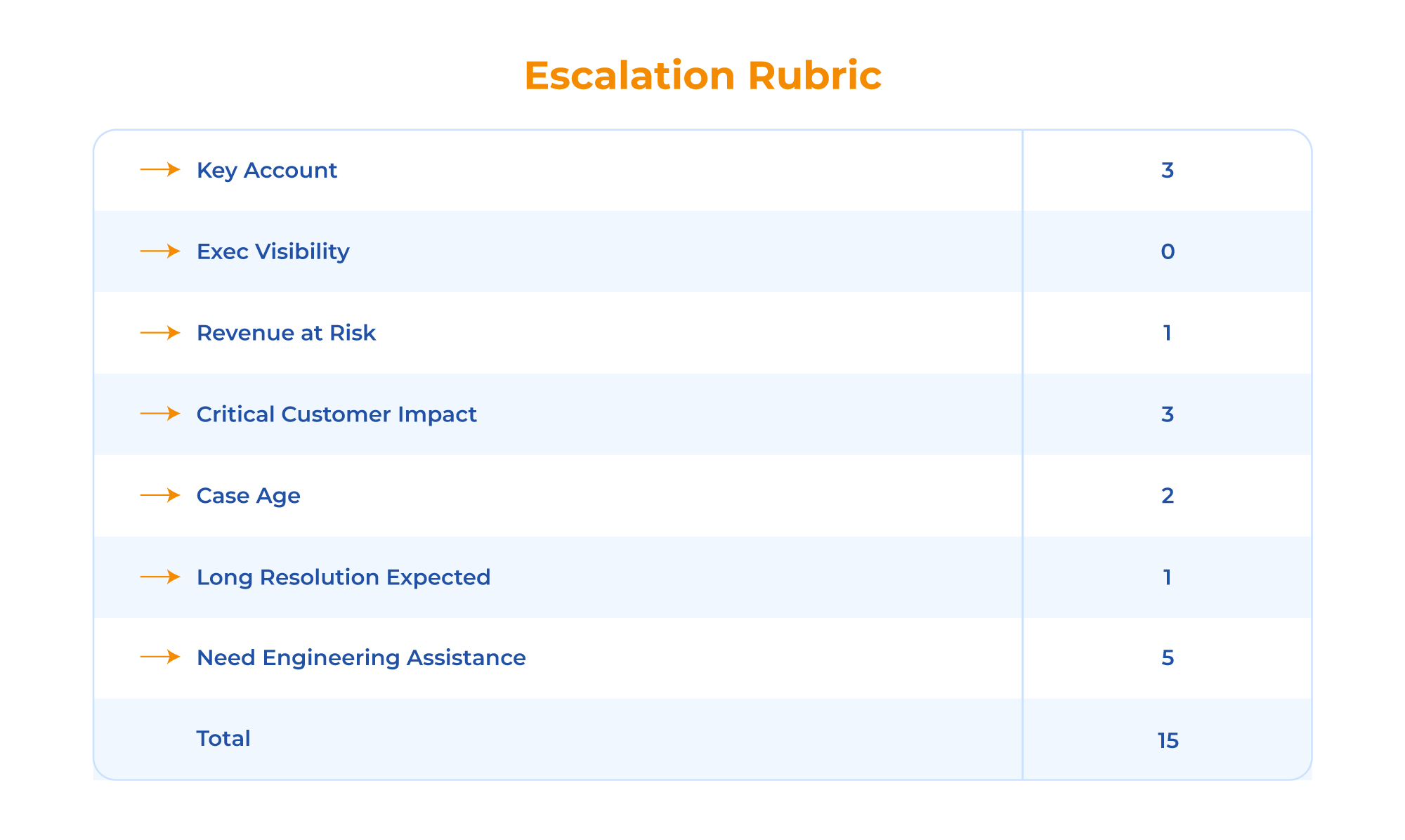
- Score each request against the rubric. (This is where you will appreciate a simple rubric.) Requests that do not qualify as formal escalations can be handled with a one-time action, accompanied or not by a manager’s contacting the customer for reassurance.
Strategy 4: Manage
This is the key activity we think about when we think about escalation management—but it’s just one step in the process. Avoid doing too much managing by appropriately screening, detecting, and preventing.
- Create a formal action plan. Many times, escalations occur because the resolution meandered or the customer did not understand what would happen next, and when. A formal action plan organizes tasks, assigns responsibility, and establishes milestones.
- Report on progress. Everyone cares about escalations: the customer’s execs, your own execs, the CSM, the sales rep. Provide regular, ideally instantaneous updates to everyone, in a language they can understand. This means assigning appropriate heat levels and sharing milestones and next steps (from the action plan, above).
- Consider dedicated staffing. The demands of escalation management often conflict with those of people and team management. Hire a dedicated escalation manager if your load warrants it.
Strategy 5: Learn
Escalations are a gift: they show us where processes are weakest. Be smart and use them to improve not just the escalation process itself, but everything that led to the escalation in the first place.
- Conduct retrospectives for all escalations. Retrospectives don’t need to be elaborate, especially for simple escalations. If nothing else, identify the root cause: Was there a product issue? A case-handling mishap? A poor customer fit? Identify remedies, if any, and implement them.
- Involve other teams such as Engineering or Sales in the retrospective as appropriate. For instance, you will want Engineering to join the process if a product defect created the issue in the first place.
- Share the outcome with the customer if appropriate. Some escalations are just painful all around, and the only ray of hope is for the customer to know that, as a result of the escalation, we will fix a broken process.
Here’s a checklist you can share with your team. Good luck applying the five strategies to your organization! Our upcoming webinar titled “Beating the Escalation Blues with Cognitive Technology”, on August 31, 2023, at 8:00 AM PST, will discuss all these strategies and more in detail. Register for the webinar here.
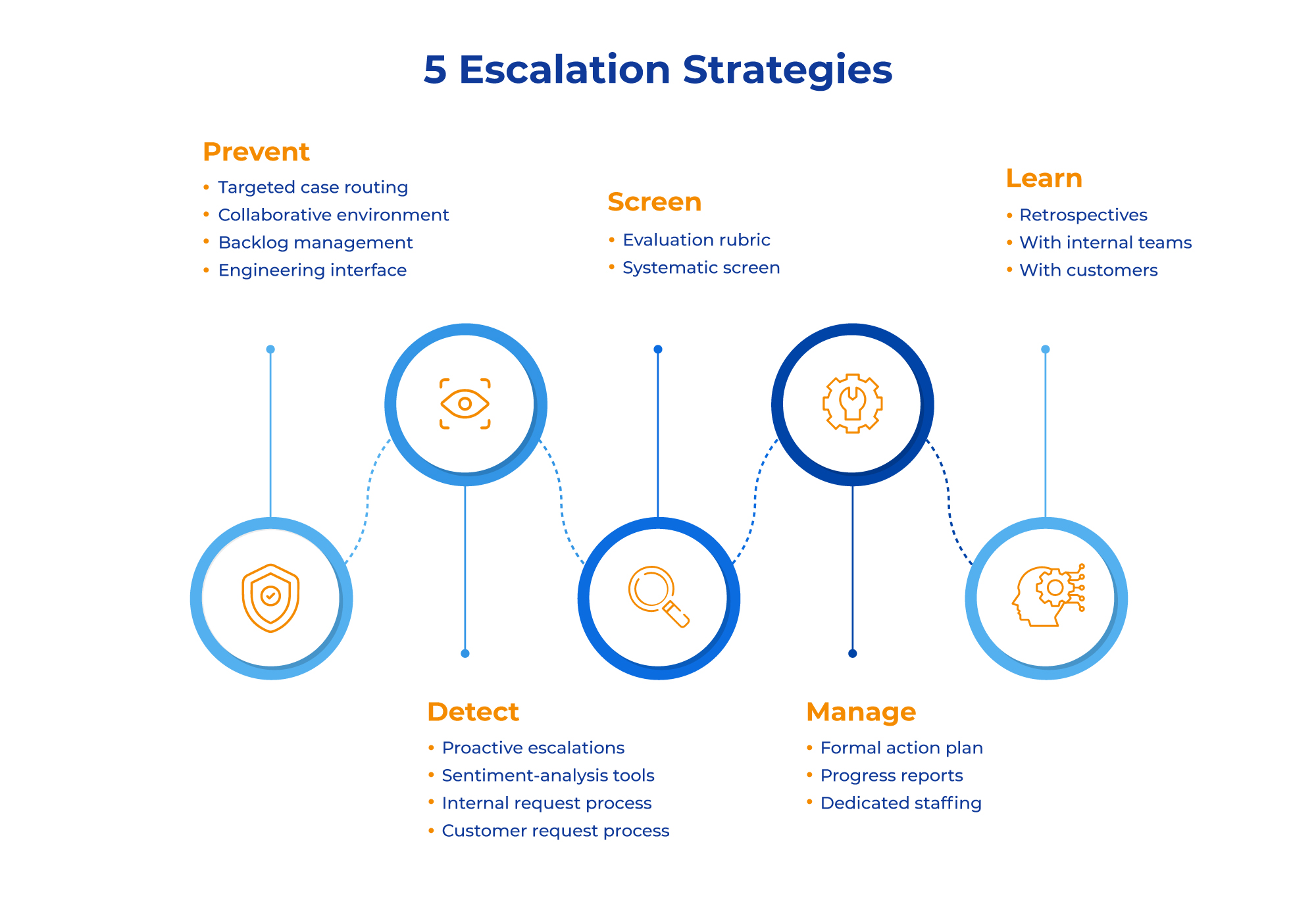
Francoise Tourniaire is the author of The Art of Support and the founder of FT Works, a firm that provides consulting, training, and coaching services to the customer success and support organizations of technology companies.

